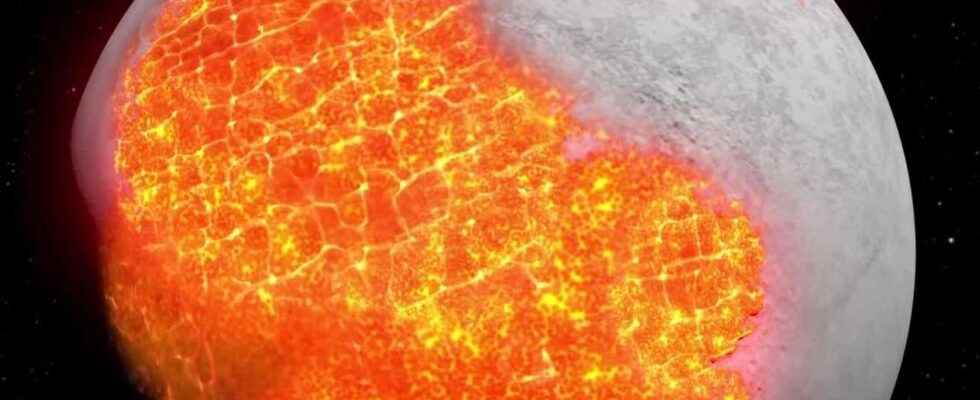If the circumstances of the formation of the Moon are now rather well defined, the way in which our natural satellite evolved thermally during the early stages of its history is still very poorly constrained. Based on new analyzes of a lunar sample, a team suggests the Moon has cooled much faster than previously thought.
You will also be interested
[EN VIDÉO] Geological history of the Moon The geological history of the Moon is revealed in all its glory thanks to this video published by NASA.
The history of the Moon has been defined mainly through the analysis of samples brought back by the various apollo missions. The most widely accepted model of evolution proposes that the Moon was first largely composed of molten rock and that the rocks seen today result from the crystallization of this ocean of magma. However, geochemical analyzes of lunar samples have so far shown conflicting results regarding the crystallization process of this original magma. Several models of evolution are therefore possible to explain the cooling of the moon and the crystallization of rocks.
Contradictory data to explain the crystallization of lunar rocks
On the one hand, some results suggest a direct crystallization from a primitive magma, while others suggest, on the contrary, a modification of the composition of magma by fractional crystallization. The process of fractional crystallization makes it possible to obtain a whole series of magmatic rocks differentiated from a parent magmatic liquid. This differentiation is linked to the fact that all minerals do not crystallize at the same time, under the same conditions of pressure and temperature. The first to crystallize (at the highest temperatures) will thus deplete the residual liquid in certain elements, which will influence the nature of the next minerals to crystallize (for lower temperatures), etc.
Further studies were therefore needed to try to unravel this contradictory information. A team of researchers therefore reanalyzed samples collected during the Apollo 17 mission in 1972. The rocks reported are troctolites, composed mainly of plagioclases,olivines and orthopyroxenes. Until now, the results of the analyzes of this sample presented a paradox. Radiometric, petrographic and petrological measurements instead indicated slow cooling over a long period of time (3.9 ° C per million years). However, the method then used to determine the age of the rock was not suitable for determining the history of magmatic cooling and in particular the highest temperature value known to the sample. Thus, according to these previous results, the rock would have started to crystallize 4.421 million years ago, which is problematic since the age of the Moon is estimated at “only” 4.383 million years after. writers, this figure also being debated.
Chemical heterogeneities that suggest rapid cooling
The new study, the results of which were published in Nature Communications, tries to solve this problem. While the sample was considered chemically homogeneous by previous studies, researchers at the University of Hawaii show the presence of subtle chemical heterogeneities in the plagioclases and olivines that compose it. These heterogeneities made it possible, thanks to the modeling digital, to retrace the thermal history of the sample. The simulations show in particular that the minerals were only able to withstand a relatively short time at very high temperatures.
The results therefore suggest that the sample underwent rapid cooling over a relatively short period of less than 20 million years. A very different figure from previous estimates which gave cooling over a period of 100 million years. Contrary to popular belief, the crust lunar would therefore have cooled very quickly after its formation. The authors also propose a new model of formation for this type of rock, which would make it possible to reconcile the various data and in particular to take into account the idea of rapid cooling. The troctolites would therefore have been formed by a process of reactive infiltration, linked to the chemical interactions between a solid but hot proto-crust and a coat underlying producing the magmatic liquid. The study shows the importance and relevance of returning to study old samples with modern analysis techniques.
Interested in what you just read?
.
fs3
